Benefits of an Active (Closed) Facebook Group
People can be quite active in Facebook Groups. A Facebook Group consisting of users all passionate about the topic of the group will be far more engaged here than they would be with a Brand or Company page.
A big part of this success revolves around the fact that we’re creating a “Closed” Group, meaning you have to be invited to the group, and not just anyone can join. And if you’re not a member, you can’t see any group discussion at all. This completely changes the atmosphere and can be incredibly effective for growing your company or brand if you pull it off.
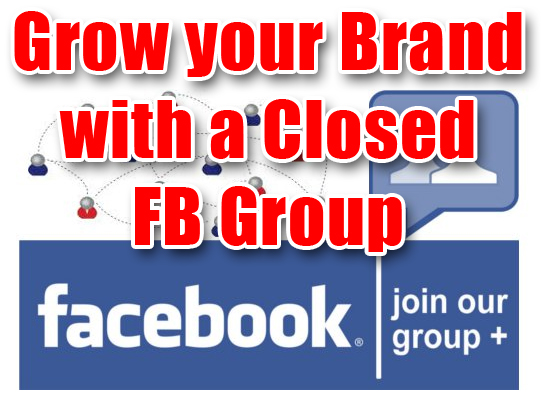
5 reasons to do this!
- You’re in control — this is YOUR target audience, and you’re in charge of what goes on
- Unparalleled consumer feedback — you will NOT get this kind of actionable feedback elsewhere
- A FREE sales team — you’ll notice that members are pushing your products for you
- Better than a newsletter — announce your new product here, and they’ll go ape-$*%^
- Loyal customer x2 — essentially, you’re taking your best customers, that go online often (because they wouldn’t be active FB Group members if they weren’t), and growing their “Brand Loyalty” one step further
BTW, my favorite part of this is that it’s a competitive advantage that the competition can’t see! And even if they do, it’s still pretty difficult to duplicate.
As we go through the steps below, outlining how to create your own Group, all the examples and screenshots will be from a Closed Facebook Group we created called “Guitar Talk” — hosted by a company called Dragon’s Heart Guitar Picks.
The Closed FB Group — “Guitar Talk” — has 11X more Comments than on their regular Company page — despite the fact that there are FAR more FB Likes on the Company Page, than there are Members of the Closed FB Group.
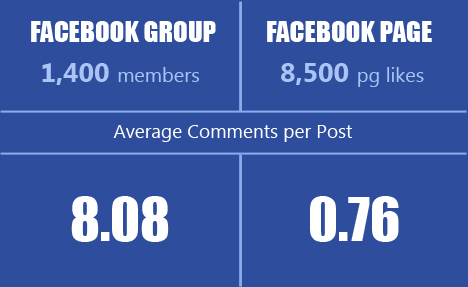
Facebook Page vs Facebook Group
TIP: To find the data for a FB Group, check out grytics.com, which we’re in no way affiliated with…. but it’s pretty cool!
How to Create an Engaged FB Group
The main caveat here is that you need to have an active and decent-sized following already with your Company Facebook page. If you don’t yet have this, then that’s something you’ll need to work on first.
Once you’ve established a solid following on your company page, you can take it one step further and create a Closed FB Group, which will act as a chat forum that revolves around your brand!
Step 1) Create a Persona/Authority
Use a person to create and grow a Facebook Group. This can be the owner of the company, or it can be an expert in the industry that works in the company. Either way, it’s important that there is an actual (somewhat authoritative) person in charge of the FB Group you’ll be creating.
In the example below, you’ll see Corey Whitney, Owner and Inventor of Dragon’s Heart Guitar Picks. People know his name well enough, so it works out nicely. We created a brand new personal FB profile for him to use just for managing this new Group we wanted to create which we decided to call “Guitar Talk”.
This is important because Corey didn’t want to use his actual personal FB account, which we expected might happen. This is totally fine — you’ll just need to create a new personal FB profile that users can engage with. Friends of this Corey Whitney account end up getting faster responses than Friends of his personal FB account anyway. So it just makes sense.
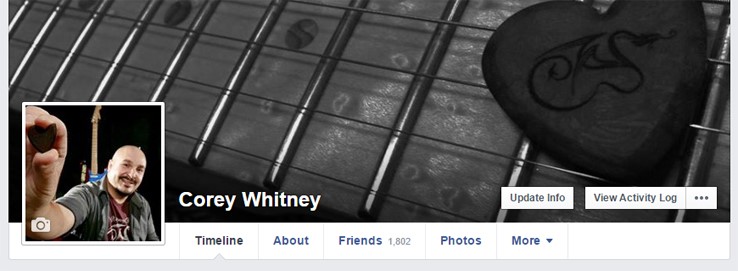
Create Facebook Persona
Step 2) Add Legitimacy with Constrictions
Your Facebook Group needs to display clear messages about the intended focus of the group, the topic that’s going to be discussed, as well as guidelines and rules about promotional activity.
By showcasing rules and guidelines, you’re re-enforcing that this is a legitimate discussion forum on your specific topic/niche.
This is actually quite important. By creating your Group Description, w/ your rules and guidelines, you’re not only adding legitimacy to the forum, but you’re helping weed out negative activity, which WILL happen more frequently if you avoid this step! People will read this — if you add Group intent, and regulations, things will run far more smoothly for you.
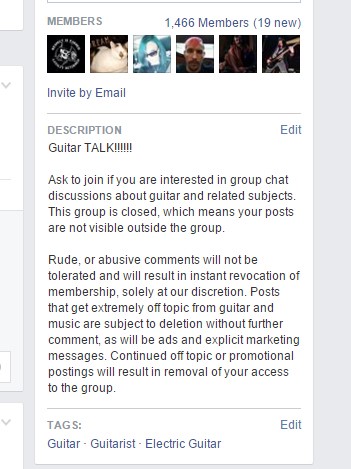
Add Rules and Guidelines in Description
Step 3) Friend Those Who “Like” Your Company Page
So, if you’ve chosen the owner of the company as the persona to act as the authority in the group, use this person’s Facebook profile, or create a new profile specifically for building your new FB Group. Keep in mind, this has to be a Personal FB Profile.
Whomever the “Authority Figure” is, this works best if FB users that follow your company know who this person is. It can still work if they don’t, but it’s going to be much easier if the FB users that follow your Company page, know who this person is.
Once you have your Personal FB profile ready to go, it’s time to get some friends.
Search Facebook for “People who like [company name]” – and put the name of your Facebook Company Page. And start adding these people as Friends. Here, we’re using what’s known as Facebook Graph Search, which you can learn more about here.
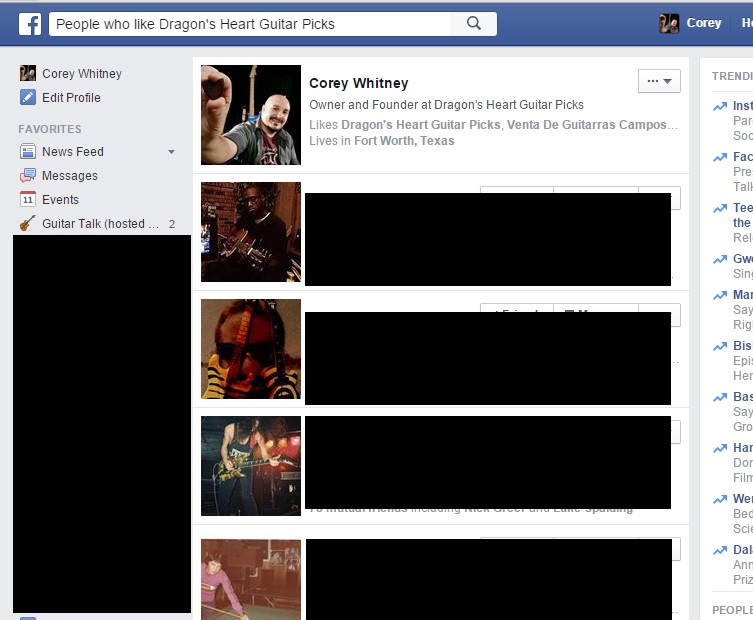
Use Advanced Facebook Graph Search
After doing this a bunch of times, you’ll probably want to start searching FB for “People who are not my friends and like [company name]” – this will return results for FB users that Like your company page, but have not yet connected w/ you as Friends.
Step 4) Add Friends to the Group
After you’ve added Friends, you can now invite them to join the Closed Group.
Click on the field under Members, and it will display your Friends that are not members of this Group. Simply click on their names when they appear and you’ve invited them to join your group, which most will.
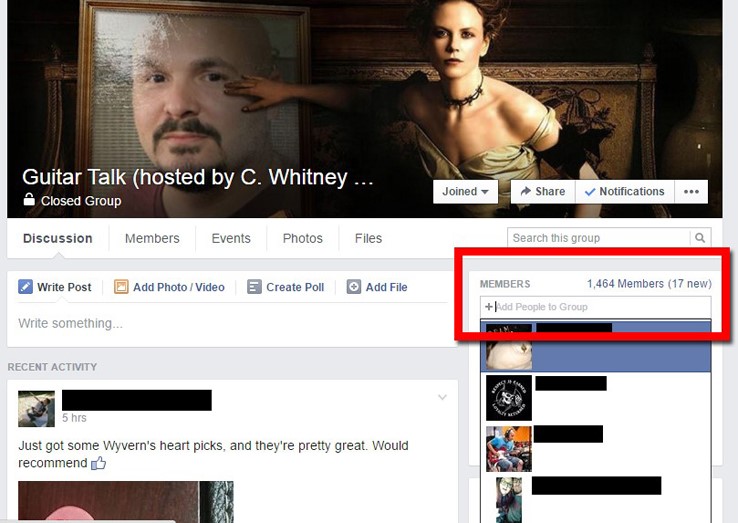
Use Members Field to Add Facebook Friends to Closed Group
Step 5) Add Friends using Email
What we’d like to do here, is import all of those who have corresponded with your company via email, and add them on as Friends. Your company email is an excellent source which we can pull from to get new Friends and add them to our Group.
Click on your Friends section, and “See All” at the bottom.
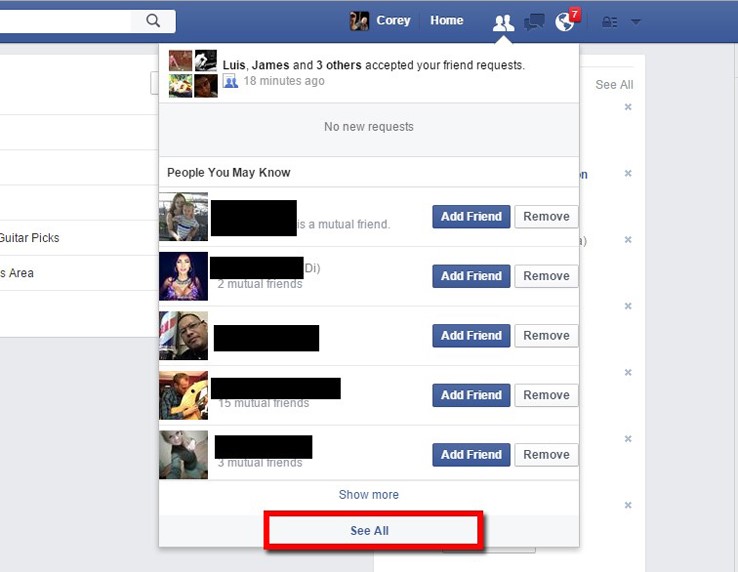
Add Facebook Friends via Email
Then you’ll see a section called Add Personal Contacts. This is where we can add Friends via our email correspondence.

Email Options to Add Facebook Friends
Importing Gmail…
The problem here, is that many companies use Google’s email service and Facebook does not always play nicely with Google. If your company uses Outlook or Yahoo Mail, then this is all easy and self-explanatory.
If not, then use this workaround…
- 1) Create a free Outlook email account
- 2) Go to Contacts in your gmail, and click on Export (it’s in the More dropdown)
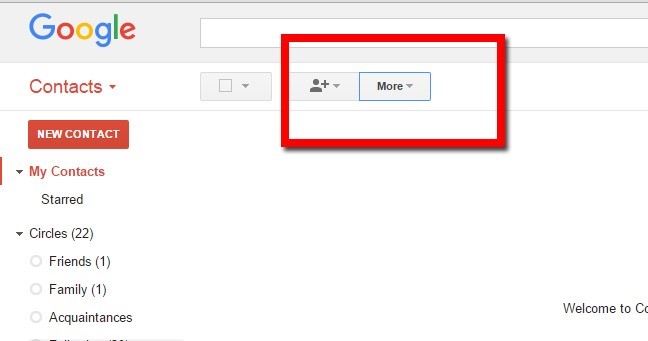
Export Gmail Contacts
- 3) Save as Google CSV file
- 4) Upload this file in the People section of your new Outlook account
- 5) Use your new Outlook email to import Friends to Facebook
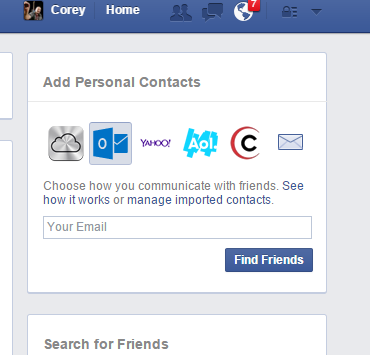
Add Friends from Outlook Contacts
Step 6) Engage
This Closed FB Group will run pretty smoothly on its own after a while, but at first you’ll need to pay close attention and engage yourself as much as you can.
This means Like everything someone posts, post interesting content yourself, and comment.
But soon, you won’t have to much more than moderate…
Step 7) Moderate!
People will quickly leave Facebook Groups (and any chat forum) if it isn’t being run properly, or if they feel it’s becoming something they don’t wish to be a part of.
Be very proactive with moderation. This means remove/block users who spam the Group with promotional or commercial messages. If you’ve done a solid job growing the following, an active following, then there WILL be those that try and leverage this commercially.
It’s very important for the sake of perpetuating the engagement and growth of your Group to weed out those that are not contributing, and those that are giving off a bad vibe by pushing commercial (or just negative) posts.
That said, this is YOUR forum you’ve created. You can be “commercial” yourself. Remember, these are people that know and like your brand. And these are people that, most of which, already know that you run the Group. So you’re allowed to post about your brand — people will be ok with this — just don’t overdo it!
Step 8) Go easy on the Promos
One of the primary reasons for having this Closed FB Group in the first place is to promote your product/service/brand. So yea, you should be doing that.
That said, if you overdo it w/ too much promotion, to the point where there ends up being more discussion about your brand, than the actual topic that the chat forum is supposed to revolve around, then you’re going to slowly but surely kill the forum.
HAVE FUN w/ Your New Group!
That’s pretty much it! I guess the last thing I’d suggest is to have fun with it. Learn to actually enjoy interacting with the Group. This is your Laser-Targeted audience (assuming you followed all the above steps). Make them happy, engage with them, actually listen to what they say. This can end up benefiting your Brand in MANY ways!
Try this yourself and respond here with the results and/or questions I can answer!
If you follow the steps above, this shouldn’t take more than a week or two for you to accomplish, so remember to share here in the comments so we can have a dialogue!
Clint Henderson
Latest posts by Clint Henderson (see all)
- How to Score Content Quality for Improved SEO Rankings (CQ Scoring) - September 8, 2017
- 2017 Mobile Marketing Statistics (Trends, Predictions, & Mobile Strategy) - April 1, 2017
- Ecommerce SEO for Product Pages (17-Step Guide) - January 27, 2017
Related Articles
 December 2, 2015 9 Ways to Grow Twitter Followers Using Trending Topics
December 2, 2015 9 Ways to Grow Twitter Followers Using Trending Topics August 26, 2016 Get Your Twitter Share Count Back: Return of the Tweets
August 26, 2016 Get Your Twitter Share Count Back: Return of the Tweets August 24, 2013 Google Plus: The Best Social Network for SEO
August 24, 2013 Google Plus: The Best Social Network for SEO March 23, 2014 Small Business Blogging for SEO
March 23, 2014 Small Business Blogging for SEO February 6, 2015 Google Algorithm Update: Is Google Punishing Sites with Poor Mobile User Experience?
February 6, 2015 Google Algorithm Update: Is Google Punishing Sites with Poor Mobile User Experience?
SEO Services
Wired SEO Company
Fort Worth Office

Wired SEO Company
Address:
Fort Worth, TX 76117
Website: www.wiredseo.com

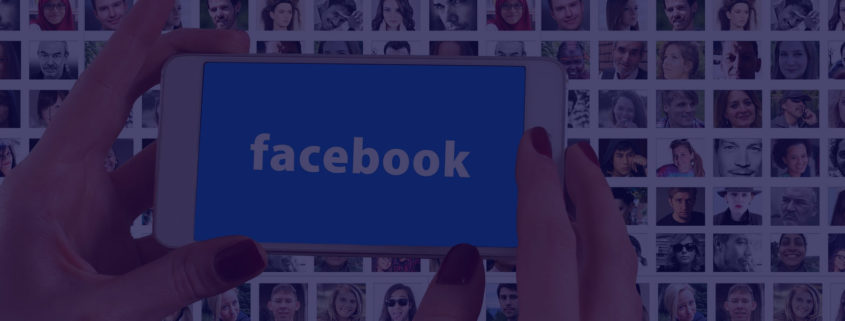












Leave a Reply
Want to join the discussion?Feel free to contribute!